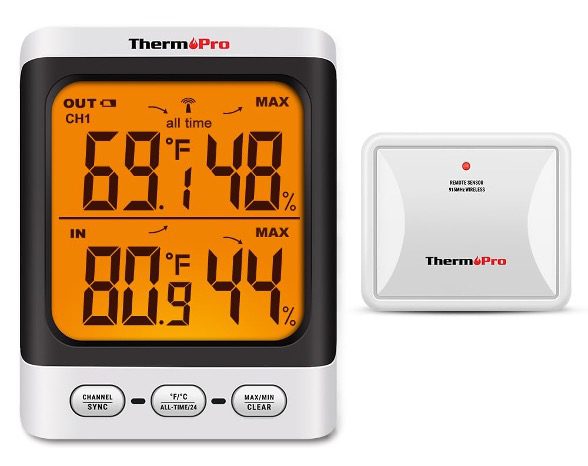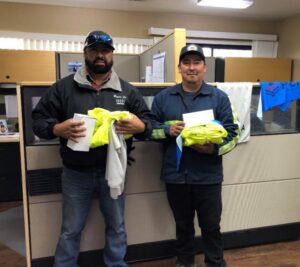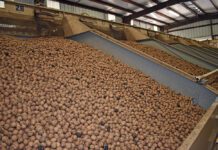
California has introduced a new regulation this year, setting standards for indoor heat regulation and other necessary practices. These rules will apply to any indoor work environment where temperatures exceed the circumstantial range of 82 to 87 degrees F. While air-conditioned office spaces may generally remain unaffected, growers must pay particular attention to non-air-conditioned areas, such as buildings, sheds and kitchens. Title 8, Division 1 defines “indoor” as “a space under a ceiling or overhead covering that restricts airflow and is enclosed along its entire perimeter by walls, doors, windows, dividers or other physical barriers that restrict airflow, whether opened or closed.” Outdoor heat illness standards will still abide by Labor Code section 3395, with the following specific to proposed section 3396 for indoor heat.
By adopting best practices for heat illness preparedness and staying informed about regulatory changes, employers can safeguard their workers’ health and ensure compliance with new laws. Preparing now ensures when the regulations take effect, businesses will be ready to roll out compliant practices, maintaining productivity and safety in tandem.
While storage sheds are generally exempt from these regulations, any instance where the temperature exceeds 95 degrees F and an employee enters the space, even briefly, will trigger the need for compliance.
On June 20, 2024, the Occupational Safety and Health Standards Board approved California Code of Regulations, Title 8, section 3396, “Heat Illness Prevention in Indoor Places of Employment.” The Office of Administrative Law (OAL) has 30 working days to review and approve or deny the proposal. The Standards Board requested that the regulation take effect immediately after OAL approval.
Steps for Employers to Prepare
Utilize Industry Resources: Businesses should consult with industry experts to understand the specific implications for their operations. These organizations can offer advice on how to implement temperature recording, engineering controls and establishing cooldown areas.
Evaluate and Modify Workspaces: Employers need to assess their current workspace and determine the best locations for cooldown areas. For businesses with limited space, creative solutions like outdoor cooldown zones should be considered.
Training Programs: Initiate training programs for employees on heat illness prevention and the proper procedures for taking cooldown breaks.
Acquire Necessary Tools: Invest in tools for accurately measuring the heat index rather than relying solely on standard thermometers.
Key Requirements for Employers
Much like the existing outdoor heat regulations, the new indoor heat regulations will mandate several critical measures to ensure employee safety:
1. Provision of Cool Drinking Water: Employers must ensure employees have access to cool drinking water at all times. It is generally recommended each employee should drink about 1 cup (8 ounces) of water every 15-20 minutes when working in hot conditions. This equates to approximately 1 quart (32 ounces) per hour (8 hours x 1 quart/hour = 8 quarts (2 gal) per person per day).
2. Cooldown Areas: A designated area where employees can cool down must be provided. This could be a dedicated room or an outdoor space if indoor options are limited. The temperature in indoor cooldown areas shall be maintained at less than 82 degrees F.
3. Cooldown Breaks: Employees are entitled to cooldown breaks to prevent heat-related illnesses. During these breaks, someone must monitor the employees. When temperatures reach 95 degrees F or above, the employer shall ensure that the employee takes a minimum 10-minute net preventative cooldown rest period every two hours. Employees shall be allowed and encouraged to take a preventative cooldown rest for a period of no less than five minutes at a time when they feel the need to do so to protect themselves from overheating.
4. Training and Record-Keeping: Employers are required to offer training on heat illness prevention and maintain detailed records of temperature and heat index readings.
5. Monitoring Heat Index: Unlike simple temperature readings, the heat index considers factors like humidity. Employers will need specialized tools to measure this accurately. AgSafe members have had good experiences with:
• ThermoPro TP62 Indoor Outdoor Thermometer Wireless, 200ft Range Outside Thermometer with Remote Temperature Sensor
• Taylor Precision 5154 Wall Thermometer
6. Consideration for Restrictive Clothing: Workplaces where employees wear heavy or restrictive safety gear will have lower temperature thresholds at 82 degrees F, acknowledging the additional heat burden these clothes impose.
Best Practices for Heat Illness Preparedness
To ensure compliance with upcoming regulations and improve worker safety, the agriculture industry has adopted several best practices:
1. Pre-Shift Meetings: Conducting meetings before the start of shifts to educate workers about the signs of heat stress and the importance of hydration and taking breaks in shaded areas.
2. Buddy System: Implementing a buddy system where workers look out for each other and recognize the early signs of heat illness.
3. Heat Stress Monitors: Utilizing heat stress monitors that provide real-time data on environmental conditions, helping supervisors make informed decisions about work-rest cycles and hydration needs. Examples of tools that can be used:
• Kestrel 5400 Heat Stress Tracker
• Extech HT30 Heat Stress WBGT Meter
4. Emergency Response Plans: Establishing clear emergency response plans, including the availability of first aid and quick access to medical care in case of heat-related emergencies.

In recent years, heat indexes have reached record highs, posing significant risks to workers, particularly in industries such as agriculture. Thanks to the enhanced practices the agriculture industry has proactively implemented and a greater emphasis on heat illness preparedness, we have seen a decline in heat illness incidents. This decline is a testament to the effectiveness of proactive measures and the importance of continuous education and training for workers and supervisors alike.
As California prepares to implement the expected indoor heat regulations, growers must stay informed and proactive in their approach to compliance. By understanding the specific requirements and adopting best practices for heat illness prevention, growers can safeguard their employees’ health and wellbeing. Early action will not only demonstrate a commitment to worker safety but also help avoid fines and penalties associated with non-compliance. As the anticipated regulations move through the final stages of approval, now is the time for employers to consult with industry experts, evaluate and modify workspaces, implement training programs, and acquire necessary tools for heat index monitoring. By preparing now, growers will ensure a smooth transition to full regulatory compliance, maintaining both productivity and safety in their operations. Stay vigilant and proactive to protect your workforce and uphold the standards of excellence in the nut industry.
If you should have specific questions regarding heat illness prevention, please contact the AgSafe team at 209-526-4400 or email safeinfo@agsafe.org.
AgSafe is a 501c3 nonprofit that provides training, education, outreach and tools in safety, labor relations and human resources for the food and farming industries. Since 1991, AgSafe has educated over 100,000 employers, supervisors and workers about these critical issues.















